Palo Duro Canyon: We’re Number 2!
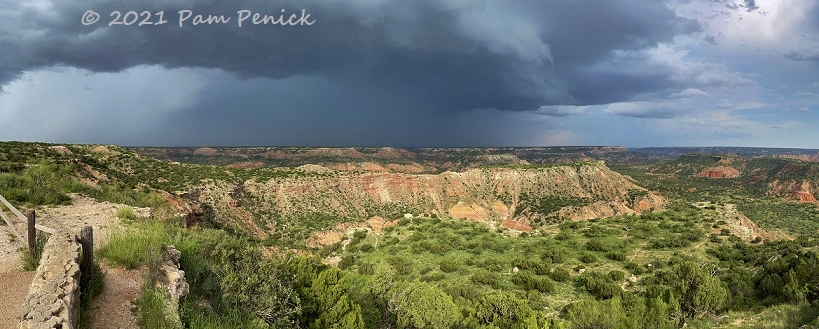
While nothing compares to the awe-inspiring views at Grand Canyon, Palo Duro Canyon — the 2nd-largest canyon in the U.S. — is also grand (with a little “g”). Striated bands of red and white rock color the canyon walls, which are stubbled with green trees. During the summer monsoon season (we were passing through on a road trip to Colorado), the canyon floor is awash with greenery too.
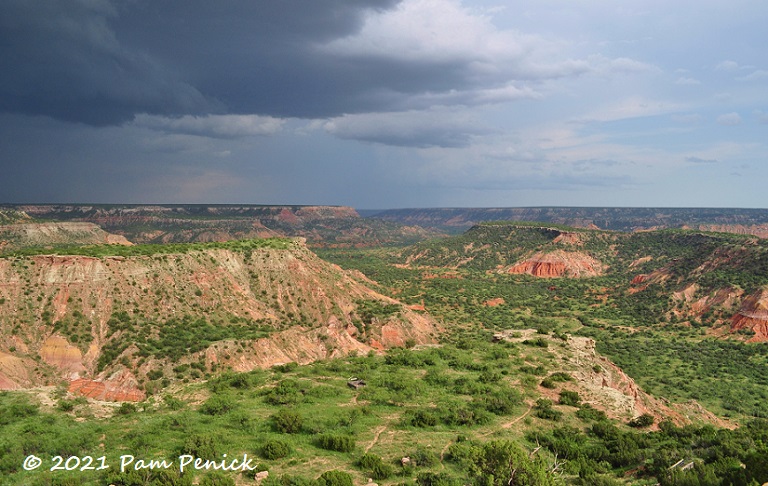
The canyon opens up like a knife gouge in the pancake-flat Texas Panhandle, 25 miles south of Amarillo. From rim to floor, it descends 820 to 1,000 feet. The gulf from one side to the other spans 20 miles in some spots. And it runs 120 miles in length. Yes, it’s big. Not Grand Canyon big, but big.
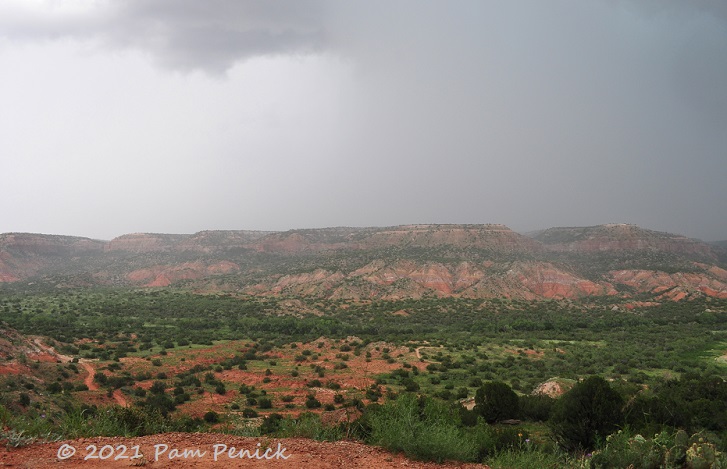
Unlike at Grand Canyon, you can drive to the bottom of Palo Duro and loop through the main valley in about 40 minutes to an hour. That’s all we had time for when we arrived one late afternoon in mid-July, as a thunderstorm rumbled in.
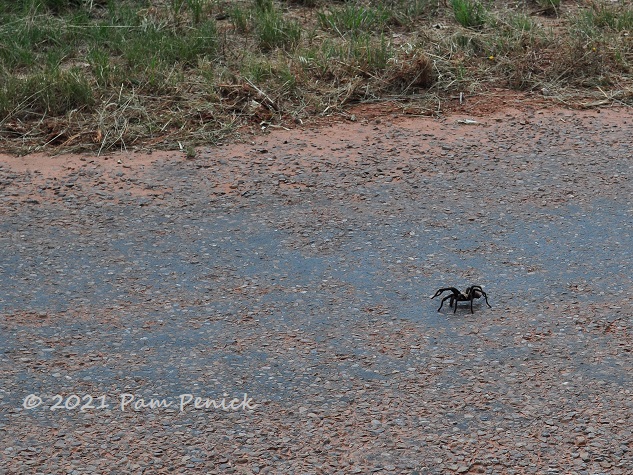
As the first rain splatters hit the windshield, I saw something on the road as our car passed over it. I turned around and went back to look (no other cars were around) and saw — yep, there’s a tarantula marching down the road.
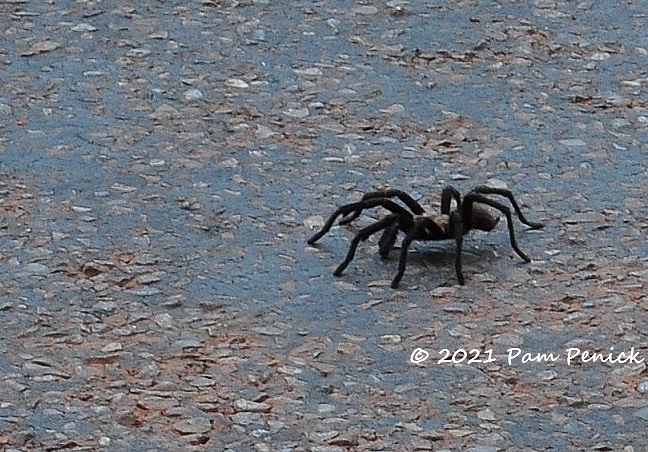
We watched it meander unhurriedly into the brush on the side of the road before moving on.
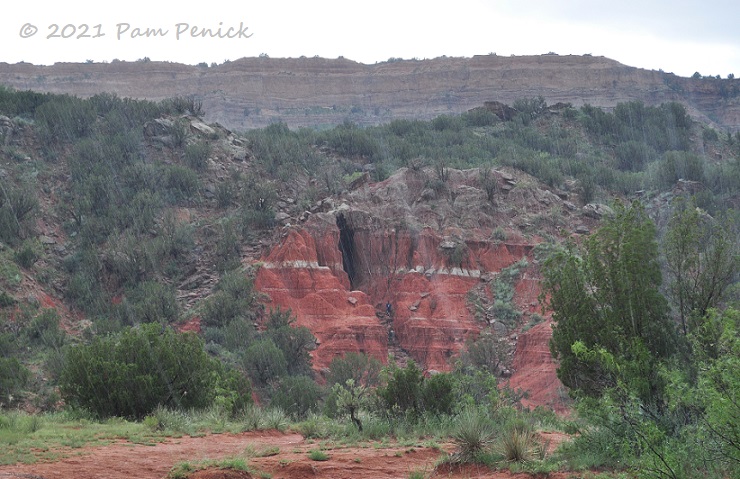
Soon it was raining buckets, and we had to squint through rain-smeared windows to admire the scenery. It’s hard to miss the Big Cave though — a slit-like opening in a red cliff wall, with a horizontal band of white across the cave entrance.
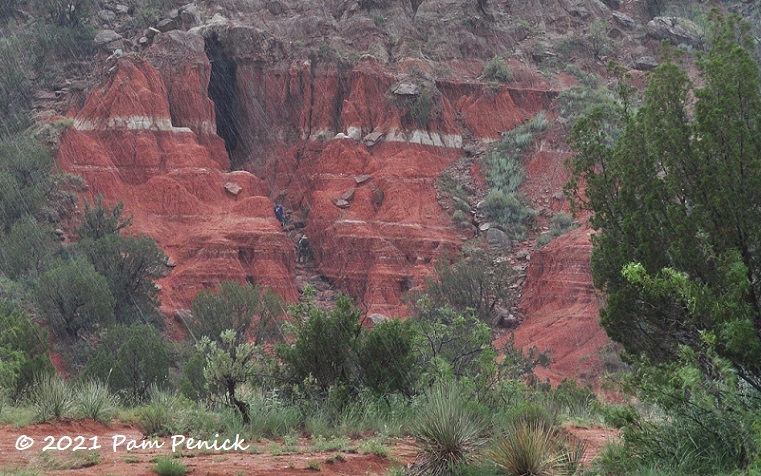
A pair of climbers just below the cave were picking their way up or down — I can’t remember which.
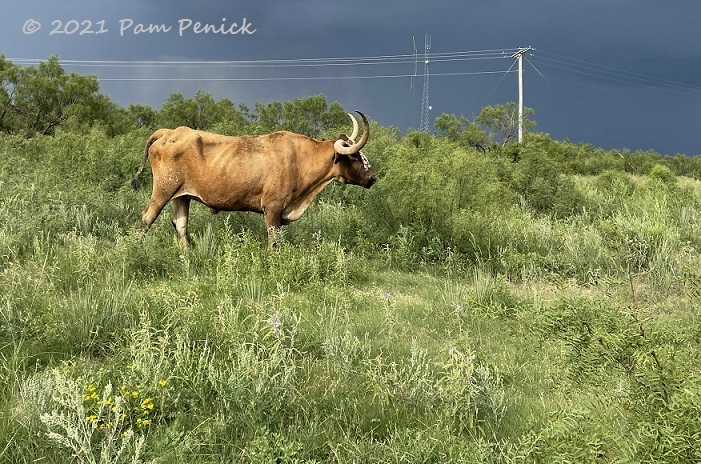
At the entrance to Palo Duro Canyon State Park, several longhorns in a fenced field were posing for pictures, or so it seemed. If it seemed strange to see livestock at a state park, well, they represent part of Texas’s and Palo Duro’s history. How? Consider this: Spanish colonizers brought their cattle with them, and some animals escaped, roamed wild, and thrived over the next couple hundred years. After the Civil War, Texans looking to get rich rounded up wild longhorns (Charles Goodnight ranched longhorns around the canyon) and drove them north to sell for slaughter. The era of cattle drives lasted only a couple of decades until the open range was closed off via fencing, railroad transport took over, and longhorn beef fell from favor. By the 1920s, the longhorn was in decline. In the 1940s, Austin writer J. Frank Dobie, with financial backing, donated a herd of longhorns to the Texas Parks Board. The longhorns living at Palo Duro today are part of that conservation effort.
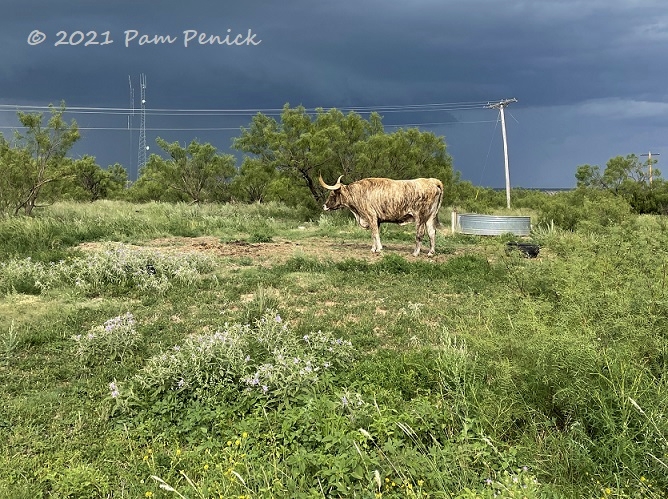
That’s a lot of freighted history riding on this animal’s sturdy back: colonization, treatment of indigenous peoples, civil war, land use and land grabs, and what part of a state’s history gets celebrated and turned into its iconic symbol (Hook ’em!). Texas patriotism and our romanticism of the Lonesome Dove era runs as deep as the canyon, however. It even plays out on summer nights at Palo Duro in a long-running production called TEXAS Outdoor Musical.
The show was set to open a few hours after we arrived, and we briefly considered buying tickets. But the thunderheads dissuaded us, as did the knowledge that we had another long day of driving ahead of us in the morning. It’s hard for me to miss an attraction though. Maybe next time.
This ends my series about our July roadtrip from Austin to Aspen and back. To read about our visit to the famous art installation Cadillac Ranch along Route 66 click here. Links to my other posts can be found at the end of each one in the series.
__________________________
Digging Deeper
Come learn about gardening and design at Garden Spark! I organize in-person talks by inspiring designers, landscape architects, authors, and gardeners a few times a year in Austin. These are limited-attendance events that sell out quickly, so join the Garden Spark email list to be notified in advance; simply click this link and ask to be added. Season 8 kicks off in fall 2024. Stay tuned for more info!
Subscribe to Digging and get updates delivered directly to your inbox. It’s easy! Just click over to follow.it (my subscription service), enter your email, and click Follow. An email confirmation will be sent, and click on that to confirm. You’re done! A head’s up: if you’re a longtime subscriber, I’ve had to switch services, and my updates now come from follow.it. You may find they’re going into your spam folder (ugh, sorry!). If so, add follow.it to your trusted contacts to keep receiving Digging. Thank you for reading!
All material © 2025 by Pam Penick for Digging. Unauthorized reproduction prohibited.


That first picture is very dramatic with the dark sky. Interesting about the longhorns. We had a tarantula skitter across a road one time. Interesting creatures.
Tarantula sightings are fairly unforgettable, aren’t they?
Captivating and moody grey skies are mesmerizing to me, so I loved this post. Great job as always on your photography, what a memorable trip!
Thanks, Heidi!
Texas has some truly beautiful natural landscapes. The monsoonal clouds added drama to your photos, and the tarantula provided a bit of a surprise.
Surprise! *sorry ;)*
We did almost exactly your trip on the way to Creede recently. So enjoyable.
According to my husband who saw the “Texas” show years ago….it was just as well you missed it, sad to say.
Ah, well, that’s good to know, Gretchen. 😉
Palo duro is truly awesome. No comparison to Grand Cañon needed. I was impressed by both.
Both are well worth seeing.
I love the dramatic lighting in these pictures!
Thanks, we got lucky with the skies. 🙂